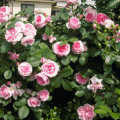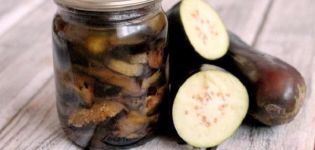Description of varieties of floribunda roses, planting and care in the open field for beginners
In addition to edible crops, gardeners grow flowers on the plots, because well-groomed plants with colorful buds are the best decoration of the garden. Recently, summer residents have preferred roses, namely the floribunda variety. This species is distinguished by frost resistance, strong immunity to most diseases, as well as unpretentiousness, thanks to which even beginners among gardeners can grow flowers.
History of appearance
The floribunda variety appeared thanks to the work of experienced breeders. At the beginning of the last century, because of the fashion to grow roses, botanists sought to create the most unusual hybrids by crossing various species. German breeder Peter Lambert, known for his experiments, was the first to cross tea and polyanthus roses. The emerging hybrid inherited the best qualities of the "parents". The tea variety gave the shape and size of the bud, and the polyanthus one - strong immunity to diseases and the type of inflorescences.
The crossing experiment was continued by the Danish scientist Sven Poulsen, crossing hybrid roses with other varieties, developing new floribunda subspecies. More than 60 species were created by a breeder from the United States, Eugene Berner. As a result, in 1952 floribunda became a separate group of pink flowers.
Description and characteristics of the rose
The floribunda group is the most extensive group of roses, whose flowers differ from other varieties in bright, juicy color. The subspecies differ externally from each other:
- flower type: simple, double or semi-double;
- bud shape: flat or goblet;
- inflorescences: multi-flowered or few-flowered;
- more than a hundred colors: monophonic, two-tone, striped.
- bud size: 4-12 centimeters;
- flowering: intermittent or continuous;
- by the height of the bush: curb (40 centimeters), medium (60-80 centimeters), high (more than 1 meter).
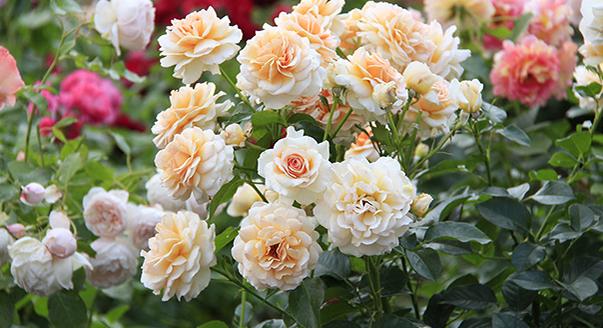
Despite the differences, floribundas have similar characteristics:
- leaves are medium, shiny, rich green;
- straight thorns;
- most of them don't smell.
Varietal variety of floribunda
As already mentioned, the floribunda is the most extensive pink group, and it includes more than a hundred subspecies. However, in garden plots, the following types are more common than others:
- Niccolo Paganini. Height - 80 centimeters. Flowers - velvet, not fading maroon color. There are 5-12 buds on the brush. Resistant to frost, heat and drought.
- Iceberg. Height - up to 80 centimeters. Flowers - double, spherical, white, purple or pink. Abundant flowering.Resistant to frost, powdery mildew, black spot. Thinns delicate aroma.
- Purple tiger. Height - 1 meter. Flowers - voluminous, semi-double. The colors are a mixture of white, purple, pink and purple stripes. Weak resistance to cold weather.
- Blue Baj. Height - up to 70 centimeters. Flowers - double, large, pale blue. The core is yellow. Dislikes temperature extremes and high humidity.
- Prince of Monaco. Height - up to 1 meter. Flowers are double. Coloring - cream, with crimson edging. Inflorescence - 5-7 flowers. Flowering is continuous. Resistant to cold and disease.
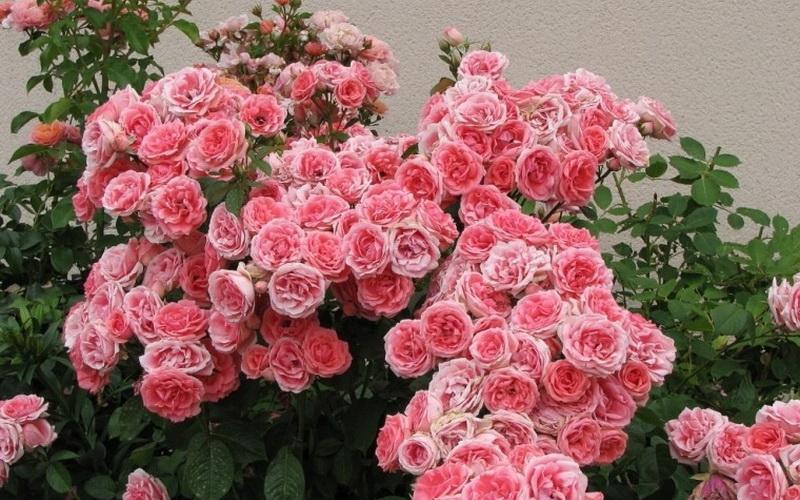
Advantages and disadvantages
Why do gardeners prefer the floribunda variety? To do this, take a look at the pluses of the variety:
- lush flowers;
- long flowering;
- unpretentiousness;
- most are resistant to frost and disease;
- compactness of the bush;
- a large number of shoots;
- propagation by cuttings;
- a huge selection of shades.
Despite the advantages, roses still have several disadvantages:
- most odorless;
- exactingness to light.
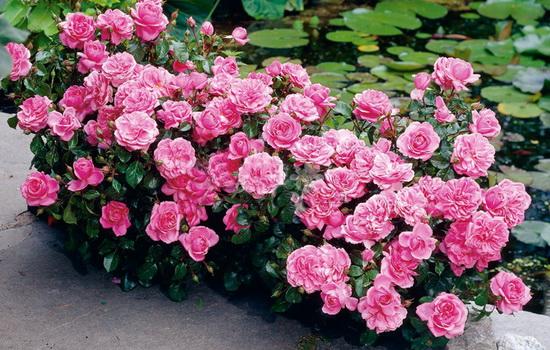
Features of growing a flower
In order for a bright, beautiful flower to bloom on the site, gardeners should adhere to simple but mandatory steps.
Landing dates
Container seedlings are planted throughout the summer. With an open root system - in early spring or autumn. Saplings with closed roots - in May-June. In the southern regions, planting can be carried out in September-October, when the plants have time to take root before the onset of frost. However, in the central and northern regions, it is better to cancel the autumn planting.
The choice of planting material
Seedlings with open roots should be purchased in early spring or fall. The plant must be freshly dug, preferably just before purchase. A seedling with dormant buds and no signs of growth and 2-3 strong shoots should not have external damage.

The container option is convenient, but you should make sure that the plant was grown in the container in which it is sold, and not transplanted there. There should be no external damage.
Seedlings with closed roots should also be free from external damage. This option is grafted much faster and has a stronger immune system.
It is better to buy in nurseries of well-known manufacturers with a quality guarantee. Packaged seedlings or seedlings in the markets are several times cheaper, but they are only suitable for greenhouse conditions.
Soil preparation
The first step is to clear the area of debris, weeds and dig it up. Just before planting, dig a hole 50 centimeters wide and 30 centimeters deep, since roses do not like crowding. After that, prepare a fertilizer mixture - a bucket of sand, peat, humus, half a bucket of fine clay, bone meal and superphosphate fertilizers. Mix and pour into the planting hole.
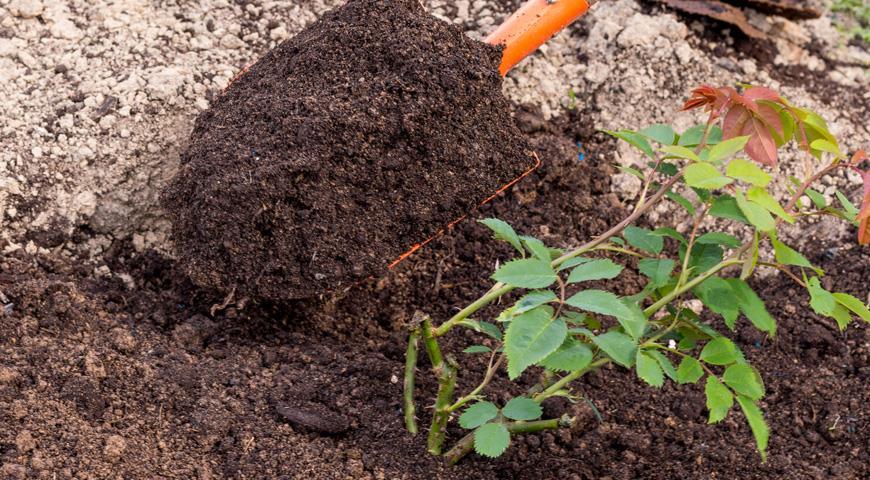
Disembarkation
After the planting site is ready, you should move on to the seedlings. Shorten the roots to 25 centimeters and, placing in the hole, carefully and accurately distribute. Cover the root collar with soil by 3-5 centimeters, tamp it so that there are no voids, and pour abundantly around the edges of the hole. After absorbing moisture, cover the soil with sawdust or cut grass. At first, protect from direct sunlight.
Do not plant roses closer than 50 centimeters to each other. This variety loves freedom, otherwise the number of flowers will decrease.
The subtleties of plant care
If the landing is done correctly, the result will not be long in coming. However, one should not forget about leaving so that the plant does not die or get sick.
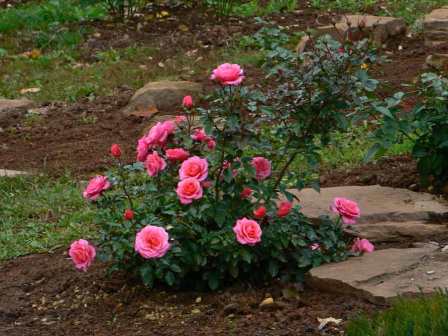
Temperature
Most of the floribunda subspecies are unpretentious to changing weather. They are resistant to drought, heat and frost. However, at particularly low temperatures, one should not forget about the shelter of flowers.Also, the rose should be protected from strong winds, especially on the north or northwest side of the site.
Illumination
Floribunda loves light, so plant it on the south or southwest side. Otherwise, being in constant shade, the plant will begin to wither and ache. However, light shade is still needed during the midday sun. Otherwise, the brightness of the flowers will decrease and the flowering time will be shortened.

Top dressing
A must for a floribunda. If enough fertilizer was added during planting, no fertilizing is required for the first year. In subsequent years, the flower must be fed 5-7 times per season. It is advisable to alternate organic and mineral fertilizers. It is better to mix the latter with watering, and add organic matter carefully so as not to harm sensitive roots.
It is enough to scatter them around the bush, and during watering they will gradually seep to the plant.
Watering
Roses need regular watering, especially for young seedlings. Adult plants should be watered once a week, preferably in the evening. One plant requires a bucket of settled warm water. In addition, floribunda loves occasional spraying of the leaves. It must be carried out with warm water, in the evening or early in the morning.
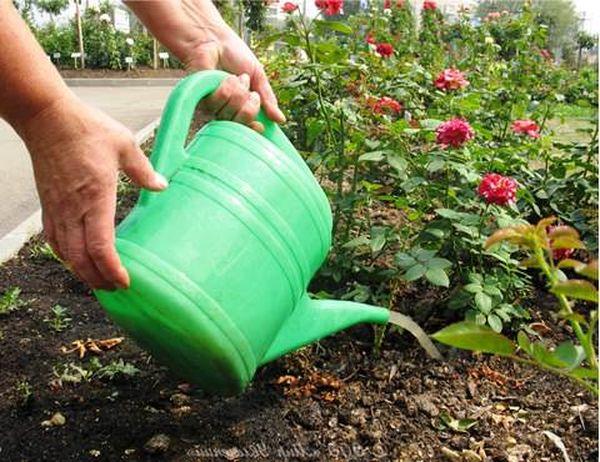
Important! When watering, do not hit the buds or flowers, and it is also necessary to avoid stagnant water.
Pruning
Spring, summer and fall pruning makes the floribunda rose bush stronger with more buds. The appearance is refined, the flowering time is extended, and the development of certain diseases is prevented.
The first pruning should be done in the spring when the foliage is blooming. It is necessary to cut off all weak, diseased or damaged shoots, as well as those whose age is more than 2 years. The length of the shoots should not exceed 20 centimeters, and no more than 4 strong buds should remain on each shoot. If all shoots are weak, they should be shortened more, leaving 1-2 buds on the branch.
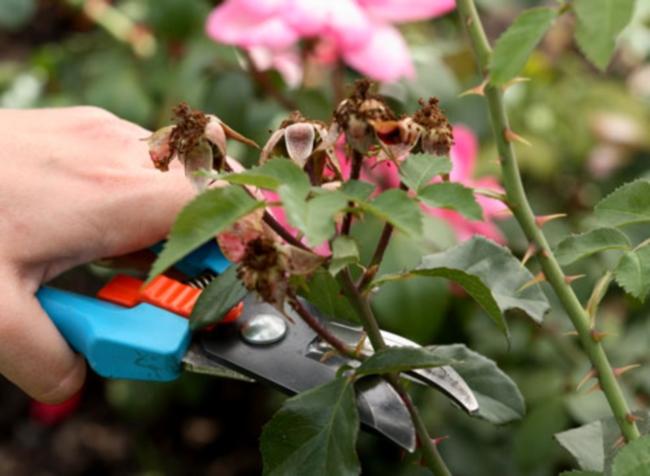
Shelter for the winter
Preparing for winter is a must for rose bushes. All leaves and inflorescences should be cut off, branches should be shortened to 40 centimeters. Burn all the remains, and spray the bush with 1% Bordeaux liquid. Wrap the bush with earth for ≈30 centimeters. From above, make a shelter from fallen leaves, spruce branches and non-woven material.
Protection against diseases and pests
Despite the good resistance of roses to diseases, one should not neglect regular prevention. To do this, it is enough to spray the bushes with onion, garlic or tobacco broth. You can also resort to chemicals after watering the bushes abundantly and letting the moisture dry.
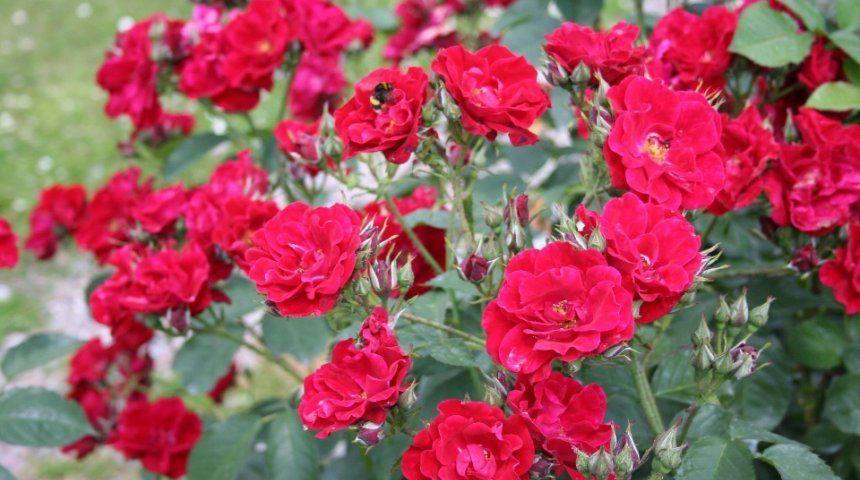
Breeding methods
The most convenient way of propagation is by cuttings. For this, woody shoots are used, cutting them off at an angle of 45 ° and half a centimeter above the bud. The length of the handle is 8 centimeters. For planting, you need a hole 15 centimeters wide, and the distance between the holes is at least 30. Place the cutting half in the ground and cover with foil.
During the rooting period, seedlings must be watered, allowed to breathe and loosened the ground. It is necessary to wrap up for the winter. The first buds must be cut off. You can transplant at least 3 years later.
Use in landscape design
Rose bushes on the site are considered decoration in themselves, but many want to emphasize the presence of a royal flower, to make it the center of the garden. To do this, floribundas are planted in flower beds, hedges are made or fences are twisted, and paths to the house are decorated with low varieties.





